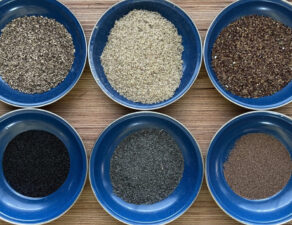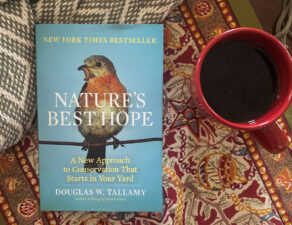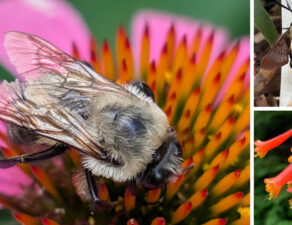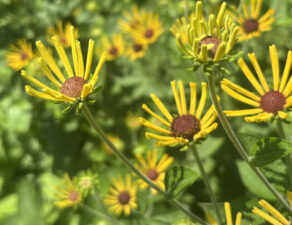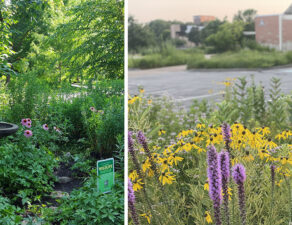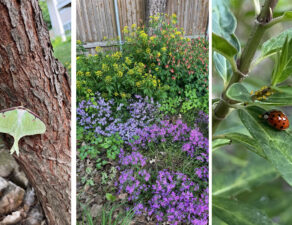
By Grace Suh
It’s in the names: Blue Valley, Blue Ridge, Blue Hills, Blue River Road, Blue River Parkway, Blue River Greenway, Blue River Corridor, Big Blue Battlefield Park, Blue Summit, Blue Township, Blue Springs, Blue Mills.
The prevalence of “Blue” places gives a clue to the centrality of the Blue River in the history of Kansas City. The original Red Bridge, built in 1859, helped Santa Fe Trail wagons cross the Blue River. (In 1846, the Donner Party followed the current Blue Ridge Road during spring rains and crossed the Blue River without benefit of a bridge.) Swope Park was sited around a meandering stretch of the Blue River, its lake and lagoon created by damming oxbows along the river’s course. As recently as the early 20th century, the Blue River really was blue, a clean and popular destination for swimming, boating, fishing and camping.
Like the Nile and the Shenandoah, the Blue River flows south to north, from its origin near the Overland Park Arboretum, to its terminus into the Missouri River. Two-thirds of all the water in the Kansas City area drains into the Blue River, and more than half a million metro residents live in its watershed, on both sides of the state line. Our August tour will visit three native gardens at distinct points along the Blue River:

BLUE RIVER HEADWATERS (location: Stilwell)
Almost 30 years ago, Connie and Mike bought a small farm in Stilwell from a woman who had lived there all her life, born in the 1915 farmhouse. The land was too rocky for farming, so her family raised dairy cows and survived the Depression by cutting trees for heat and selling milk. They also dug up rocks and sold them for new house construction in Mission Hills.
Thanks to its unsuitability for crop farming, much of the land was intact, including mature Oak and Hickory groves. However, the creek banks were denuded from pasturing the dairy cows, while other areas were overrun with Brome and Osage Orange. As these were cleared, Connie and Mike observed the re-emergence of native flowering plants and woodland spring ephemerals — and with them, butterflies, other pollinators, and birds.
Inspired by this resurgence, the couple set out to restore more and more of their land, year by year. They sowed sweeping prairies, separated by boulevards of Hazelnut shrubs. They planted immense shrub islands of bird favorites like Buttonbush, Chokeberry, and Ninebark. And they continue the work of establishing more native trees in their woods.
Seeing the incredible variety of wildlife drawn to the spring-fed creek, which feeds into the Blue River, they sought to bring nature closer, by digging a small pond near the house. Now their summer evenings are filled with the song of tree frogs.
In the decades Connie and Mike have lived on this acreage, development in south Johnson County has expanded at an astonishing pace. Their farm used to sit amidst mature Oak, Hickory and Walnut forest. Now much of the surrounding woods has been razed, replaced by million-dollar mansions whose pools drain chlorinated water into the creek, and thus into the Blue River.
“The irony is,” Connie says, “people are attracted to these areas to be closer to nature, but development is destroying the very thing they admire.”
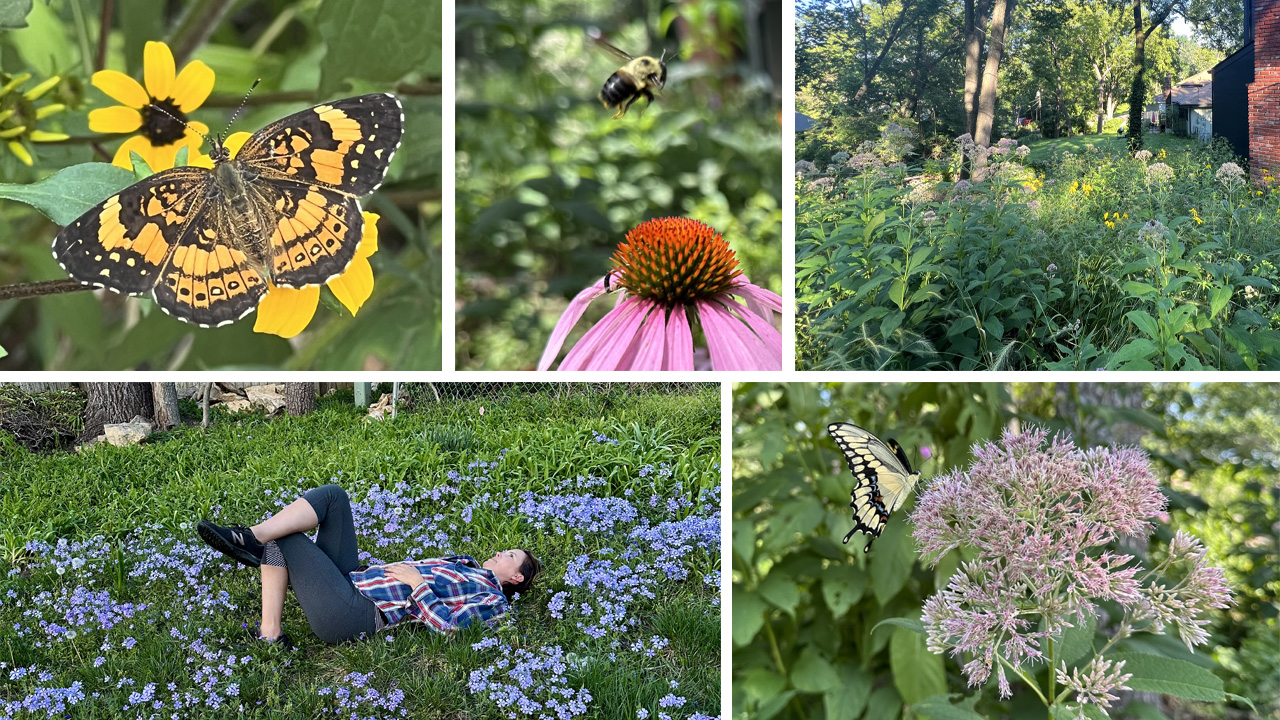
BLUE RIVER GREENWAY (location: Minor Park vicinity)
A dedicated mountain biker, Sarah moved here from Brookside for the direct proximity to the miles of greenway bike trails just out the door, north through Swope Park and south to Martin City. She enjoys riding the trails with her husband, Cameron Chambers, a 24-Hour Solo Mountain Biking world champion (and five-time national champion).
As Sarah says: “One of the coolest things about the Blue River corridor is that you don’t have to leave the city to experience nature. There’s no loading up the car, driving for hours. It’s all right here.”
Being such devoted users, Sarah and Cameron are also fierce protectors of the parkway and the nature it affords both wildlife and city residents. Sarah has served on the Board of Directors at Heartland Conservation Alliance, volunteers with Urban Trail Co., and has advocated for protection of the parkway against encroaching development in local media and to Jackson County legislators.
Though their house had been owned by an avid gardener, it was a rental in later years, and the gardens were long neglected by the time Sarah arrived in 2019. At first, she pulled invasive species and watched the beds to see what emerged — many Daylilies and Phlox cultivars, as well as natives like Virginia Bluebells, Bee Balm, Joe Pye Weed and Rudbeckias. Other natives, like Woodland Sedge (Carex blanda) and a clearing of spring ephemeral Wild Sweet William, seem to be naturally occurring.
Sarah has since planted and sown many more native plants and garden areas, including a recently installed full sun garden in front, and a beautiful trellis of Coral Honeysuckle that festoons the front door. But she also enjoys watching the many natives that magically volunteer, including Cup Plant, Swamp Rose Mallow and Clasping Coneflower, very possibly carried by birds from the remnant prairie at Jerry Smith Park, just down the Blue River Parkway.
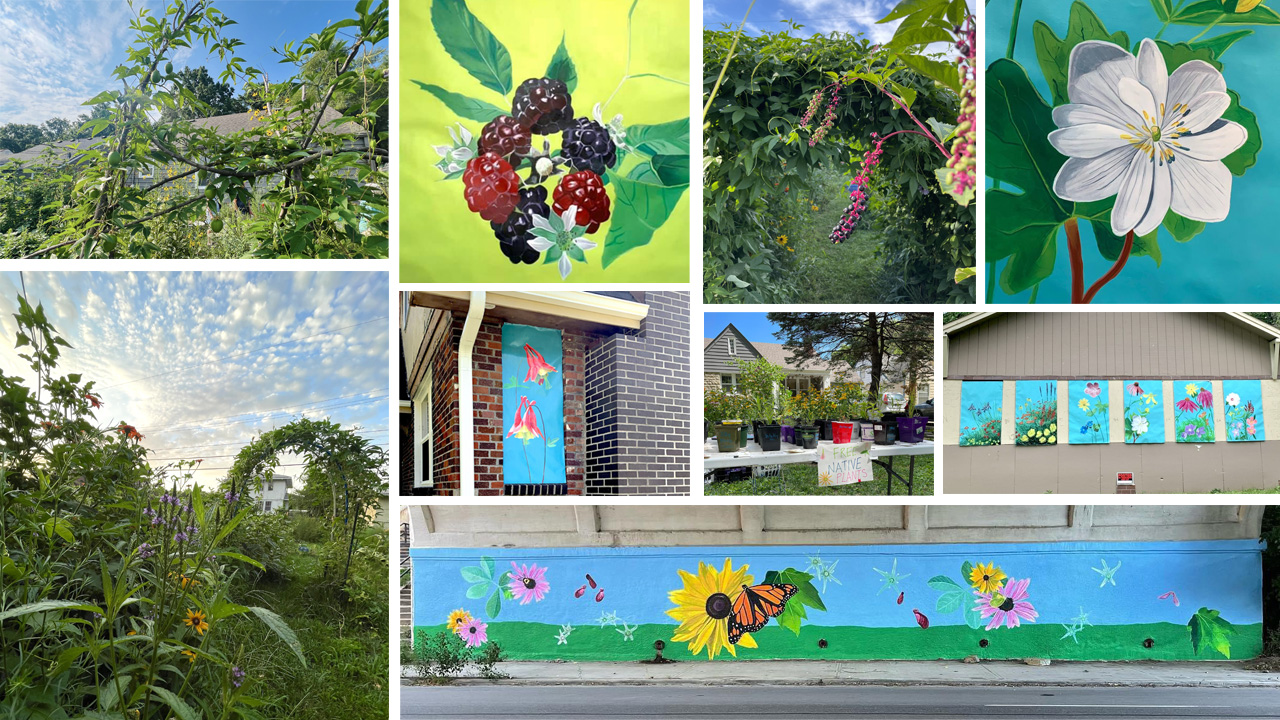
FLOWERS FOR MARLBOROUGH (location: Marlborough neighborhood)
When their rent a few blocks away became unaffordable, it looked as though Julie and Justin would be priced out of the school district where their older son was in charter elementary school. Then they looked just on the other side of Troost and found this house. Though it was a stretch for them even to cover inspection and closing costs, they still worried that they might be perceived as gentrifiers, or fail to fit in.
But the family immediately loved the diversity in Marlborough, their new neighborhood, and the active and forward-thinking Marlborough Community Coalition.
Marlborough is the epicenter of the Middle Blue River Green Infrastructure Project, targeted at the decades of flooding that has wreaked damage to both infrastructure and housing, leading to a 28 percent vacancy rate and elevated crime rate.
Julie’s home is located two blocks from Rachel Morado Plaza, one of the major components of this infrastructure project. Morado Plaza is a large, terraced swale planted with native trees, grasses and flowers, and Julie visited often with her family, especially during the pandemic. Inspired by the healing power of native plants, and their powerful coexistence with her urban community, she created a project called Flowers for Marlborough.
With permission from the Kansas City Parks Department and a grant from the Missouri Prairie Foundation, Julie, who is a professor of painting at the Kansas City Art Institute, painted murals of native flowers and flora on the Paseo Bridge overpass. “I wanted,” she says, “to introduce people to our non-human neighbors who are helping keep our houses from flooding and the Blue River cleaner, among other amazing benefits.”
At her own home garden, Julie grows an incredible array of native plants, especially in the back yard, which is filled with all-day sun. She estimates that 90 percent of her plants have been grown from seed. “Seeds are magical,” she enthuses. She loves growing from seed so much that she has shared hundreds of seedlings with neighbors at community events and at the children’s flower painting workshops she conducts at the local elementary school and in her front yard. She will carry on that tradition with free seedlings at her garden tour.
These three gardens are part of our August 10th Habitat Garden Tour.
CALL FOR VOLUNTEERS
More friendly faces are needed for the final months of our season. If you enjoy helping people feel welcome and chatting about flowers, birds and butterflies, we’d love to have you! As a thank you, volunteers enjoy a private preview of that month’s gardens. Please sign up here: https://www.signupgenius.com/go/8050E48A8A629AAF94-48427704-habitat#/
HOW TO SIGN UP
If you’re not already a subscriber, we’d love to have you join us. SIGN UP FOR AUGUST or SUBSCRIBE TO THE SEASON by making a donation of any amount, according to your means.
WHERE TO GO
The Thursday before each Second Saturday (August 8), registrants and season subscribers will receive an email with garden addresses. Click on the button to download the PDF of in-depth descriptions and key plants.
If you have not been seeing the emails, please note:
- The emails are sent from: Grace@deeprootskc.org
- The subject line will be: IMPORTANT 🌸 August Habitat Gardens 🦋 ADDRESSES & INFO
- If your Inbox has been filtering these emails, please add this address to your contacts so the email does not go to a junk or spam folder.
- If you do not see the email on August 8th, please email Grace@deeprootskc.org ASAP, as it is not possible to respond to phone calls and emails on the day of the tour.
See you in the garden!
WHAT IS A HABITAT GARDEN?
Habitat Gardens are gardens of native plants that provide habitat for birds, bees, butterflies and other wildlife.
Every Second Saturday Habitat Garden Tour invites you to three residential habitat gardens to:
- Experience diverse habitat gardens and the succession of seasonal blooms that support wildlife.
- Meet other gardeners, native plant enthusiasts and wildlife supporters.
- Find inspiration and information to grow your own habitat garden.
- Future and past Habitat Gardens: org/HabitatGardens
MORE INFORMATION ON THE BLUE RIVER
- Urban Waters Federal Partnership: Renew the Blue River (story map)
- Flatland KC: Why Care about the Blue River Watershed? (article)
- KCUR: This Kansas City River Is in Trouble (article)
- Heartland Conservation Alliance: Blue River Report Card (interactive website)
- Heartland Conservation Alliance: Blue River Action Plan (PDF)
- The Nature Conservancy: Find Yourself in the Blue River (video)
